Jungian Concepts

Jungian analysis covers a great multiplicity of ideas, ranging from fundamental concepts of psychodynamic theory and child development to essential ideas of anthropology to plurality of religious views and ideas. Below are some main subject areas and terminology, including such crucial Jungian terms as:
-
Collective Unconscious
-
Archetype
-
Symbol
-
Psyche
-
Dream
-
Myth
-
Repression
-
Inflation
-
Individuation
-
Initiation
-
Synchronicity
-
Transcendent Function
-
Active Imagination
-
Alchemy
-
The Red Book (Liber Novus)

ACTIVE IMAGINATION
Active Imagination is a method of assimilating unconscious contents (dreams, fantasies, etc.) through some form of self-expression.
The object of active imagination is to give a voice to sides of the personality (particularly the anima/animus and the shadow) that are normally not heard, thereby establishing a line of communication between Consciousness and the unconscious. Even when the end products—drawing, painting, writing, sculpture, dance, music, etc.—are not interpreted, something goes on between creator and creation that contributes to a transformation of Consciousness.
The first stage of active imagination is like dreaming with open eyes. It can take place spontaneously or be artificially induced.
The second stage, beyond simply observing the images, involves a conscious participation in them, the honest evaluation of what they mean about oneself, and a morally and intellectually binding commitment to act on the insights. This is a transition from a merely perceptive or aesthetic attitude to one of judgment.
D. Sharp
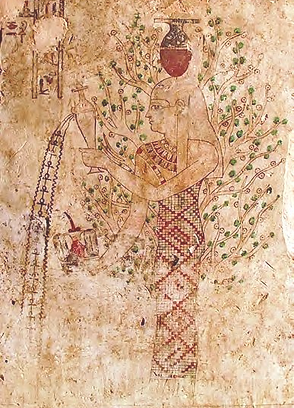
COLLECTIVE UNCONSCIOUS
Some of the symbols derive from what Dr. Jung has called "the collective unconscious" that is, the part of the psyche that retains and transmits the common psychological inheritance of mankind. These symbols are so ancient and unfamiliar to modern man that he cannot directly understand or assimilate them.
C.G. Jung, M.L. von Franz, et all

INFLATION
We are born in a state of inflation. In earliest infancy, no ego or consciousness exists. All is in the unconscious. The latent ego is in complete identification with the Self. The Self is born, but the ego is made; and in the beginning all is Self. This state is described by Neumann as the uroborus (the tail-eating serpent). Since the Self is the center and totality of being, the ego totally identified with the Self experiences itself as a deity. We can put it in these terms retrospectively although, of course, the infant does not think in this way. He cannot yet think at all, but his total being and experience are ordered around the a priori assumption of deity. This is the original state of unconscious wholeness and perfection which is responsible for the nostalgia we all have toward our origins, both personal and historical.
The original state of affairs – experiencing oneself as the center of the universe – can persist long past childhood.
The psychotherapist frequently sees cases of this sort. Such a person considers himself as a most promising individual. He is full of talents and potentialities. One of his complaints is often that his capacities and interests are too wide-ranging. He is cursed with a plethora of riches. He could do anything but can't decide on one thing in particular. The problem is that he is all promises and no fulfillment. In order to make a real accomplishment he must sacrifice a number of other potentialities. He must give up his identification with original unconscious wholeness and voluntarily accept being a real fragment instead of an unreal whole. To be something in reality he must give up being everything in potentia. The puer aeternus archetype is one of the images of the Self, but to be identified with it means that one never brings any reality to birth.
E. Edinger
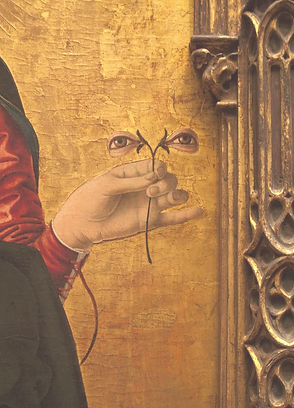
PSYCHE
By his basic definition of the psyche as the 'totality of all psychic processes, conscious as well as unconscious', Jung intended to delineate the area of interest for analytical psychology.
A. Samuels
Like the atom, the psyche and its elements are not physical objects that can be seen or touched, but unlike the atom they cannot even be made to fit the conditions of laboratory testing and statistical evaluation. We cannot speak of the psyche as a thing that is or does this or that. At best we can speak of it indirectly by describing human behavior—the behavior of others and also our own subjective experience—as if it expressed aspects of a hypothetical pattern of meaning, as if a potential, encompassing wholeness were ordering the action of the parts. For instance, we can recognize that an autonomous impulse or a hitherto hidden personality pattern has emerged and behaved as if it intended a certain action which was meaningful in relation to that total personality. The most basic hypothesis about the human psyche with which we deal here, then, is that of a pattern of wholeness that can only be described symbolically.
E.C. Whitmont

SYNCRONICITY
Synchronicity — a coincidence in time of two or more casually unrelated events which have the same or similar meaning. This may take form of a coincidence of inner perceptions (foreboding, dreams, visions, hunches, etc.) with outward events situated in the past, present, or future.
Jung explains the occurrence of such synchronistic phenomena by an 'a priori, casually inexplicable knowledge', based on an order of the microcosm and macrocosm, which is independent of our will and in which the archetypes play the role of ordering factors. The meaningful coincidence of an inner image with the outward event, which characterizes synchronistic phenomena, reveals the spiritual as well as the material and corporeal aspect of the archetype. It is also the archetype which by its enhanced energetic charge (for numinous effect) provokes the individual who experiences it they increased emotionality and partial abaissement du niveau mental (lowering/reduction of mental level) which is indispensable if synchronistic phenomena of this client are to occur and to be perceived.
J. Jacobi
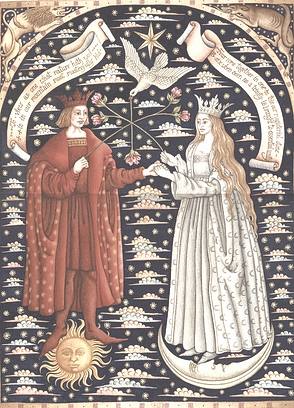
ALCHEMY
Jung thought that alchemy, looked at from a symbolic and not a scientific eye, could be regarded as one of the precursors of modern study of the unconscious and, in particular, of analytical interest in the transformation of personality. The alchemists projected their internal processes into what they were doing, and, as they carried out their various operations, enjoyed deep, passionate emotional experiences along with spiritual ones. Crucially, they did not attempt to split off experience from activity and in this way, too, they link with a contemporary psychological attitude, at least as interpreted retrospectively. Like analytical psychology and psychoanalysis in their time, alchemy can be seen as a subversive and underground force: its vivid and earthy imagery contrasting with the stylized and sexless expression of medieval Christianity, just as psychoanalysis startled Victorian prudishness and complacency.
A. Samuels

DREAMS
Dreams are part of the process of human evolution, and whether the individual notices it or not, dreams will always be contributing to his efforts to fulfill the whole of his potential, concentrating especially on those parts that he is neglecting and that are therefore threatening the growth and development of his personality.
... Dream tell us what we need, as well as what we desire, in order to be complete. Dreaming involves directing the dreamer's attention especially to whatever he is most in danger of ignoring or rejecting in his everyday waking attitudes.
T. Chetwynd
Dream unfolds along the lines of a narrative. Next to our predilection towards storytelling, these narratives are also enumerations of embodied states existing simultaneously in spacial networks, presenting themselves sequentially to the perceiver. ... This relates to images as ecosystems, in which each element exists in a simultaneous network with all other elements.
R. Bosnak

INITIATION
Entering sacred space is always an ordeal or trial, whether done voluntarily or involuntarily. One must undergo rituals of degradation and humiliation at the threshold, and “submit” before crossing over into the transitional sacred space. Submission is symbolized culturally in numerous ways. Fraternity hazing, for example, is a vestige of this ancient process and has primordial meaning. Entering the initiation process requires humility. Hinduism has a saying that a temple cannot be found with unbent knee or unbowed head. You cannot desecrate the real temple. Rituals of degradation symbolize the spirit of resignation and surrender required to enter sacred space. It is not accessible otherwise.
R.L. Moore
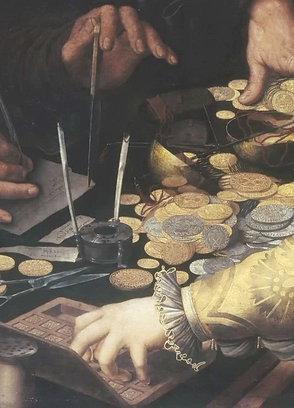
REPRESSION
The law of the preservation of energy applies also to the psyche. Whatever is repressed, while then lost to consciousness, still does not disappear. It becomes an unconscious compulsive force which then has primitive and potentially destructive characteristics. Repression of sexuality leads to hysterical (hystera means womb in Greek), exaggerated pseudospirituality, typical of Victorianism and of Freud's days. But repression of the religious myth leads to the neurosis of our time, to a primitive mythologization of secular values, to a pseudoreligion of material prosperity, monetary greed and sexual thrills. Finally, the repressed energy of the myth contains also the threat of collective no less than individual psychosis, which those who can become aware of the situation have the awesome responsibility to attempt to transform.
E. C. Whitmont
Repression may be regarded as the instrument most frequently used by the old ethic to secure the imposition of its values. In repression, the excluded contents and components of the personality which run counter to the dominant ethical value lose their connection with the conscious system and become unconscious or forgotten – that is to say, the ego is entirely unaware of their existence. Repressed contents, unlike those suppressed, are withdrawn from the control of consciousness and function independently of it; in fact, as depth psychology has shown, they lead an active underground life of their own with disastrous results for both the individual and the collective.
E. Neumann

THE RED BOOK
The overall theme of the book is how Jung regains his soul and overcomes the contemporary malaise of spiritual alienation. This is ultimately achieved through enabling the rebirth of a new image of God in his soul and developing a new worldview in the form of a psychological and theological cosmology. Liber Novus presents the prototype of Jung’s conception of the individuation process, which he held to be the universal form of individual psychological development. Liber Novus itself can be understood on one hand as depicting Jung’s individuation process, and on the other hand as his elaboration of this concept as a general psychological schema.
S. Shamdasani

ARCHETYPE
Jung uses the word ‘archetype’ to designate those universal symbols which possess the greatest constancy and efficiency, the greatest potentiality for psychic evolution, and which point away from the inferior towards the superior.
That is to say, there is an intermediate realm between the oneness of the individual soul and its solitude, and the variety of the universe: between the res cogitans and the res extensa of Descartes, and that realm is the image of the world in the soul and of the soul in the world, in other words, the ‘place’ of symbolism ‘working’ in areas prepared by the archetypes—eternally present, the ‘problem being whether the consciousness perceives them or not’.
J.E. Cirlot

INDIVIDUATION
Individuation is a process informed by the archetypal ideal of wholeness, which in turn depends on a vital relationship between ego and unconscious. The aim is not to overcome one's personal psychology, to become perfect, but to become familiar with it. Thus, individuation involves an increasing awareness of one's unique psychological reality, including personal strengths and limitations, and at the same time a deeper appreciation of humanity in general.
... Individuation differs from individualism in that the former deviates from collective norms but retains respect for them, while the latter eschews them entirely.
D. Sharp
Individuation underscores Jung' belief that neurosis is ultimately an existential issue that cannot be overcome unless the meaning of one's life has been recognized.
R. Kradin
This is the loneliness of liberation, of no longer finding security by taking sides with the crowd, of no longer believing that the rules of the game are the laws of nature. It is thus that transcending the ego leads to great individuality.
A. Watts

MYTH
The archetypal realm, the place of original imprinting, is the mythic realm, a place of original experience. Myth is not a by-product of afterthought, or pale reflection of social patterns – myth-making is a spontaneous, primary activity of psyche. Nor is myth only a 'projection' of psychic figures, for this makes myth secondary, presupposing a projector. Mythic events and persons are experiences of psyche. Without being literal, myths are 'true' stories, and 'real' persons in that they are psychologically true and real. Myths makes psyche intelligible.
L. Cowan
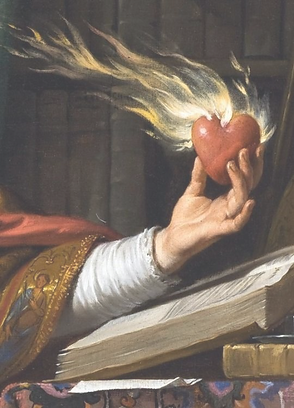
SYMBOL
Jung's symbolic approach to the psyche is his special contribution to depth psychology. It is dictated by the empirical fact that unconscious processes are not directly accessible to our senses. They cannot be seen, touched, heard, or tasted, nor adequately described by the rational categories of causality, time, space, and physical substance that structure our conscious processes. A new approach commensurate with the intangible quality of the psyche is needed. The psyche speaks in symbols. If we are to understand it, we must learn its language and enter into symbolic modes of communication.
By symbol, Jung means a nonrational, figurative constellation that points beyond itself to unknown or unknowable objective reality and makes that reality perceptible to us. Hence, the symbol has a mediating function; it makes accessible to our consciousness something that is inaccessible to our direct sensory experience and to our reason. The symbol cannot be produced at will, however, nor can it be automatically translated into some known problem or drive as, for example, with Freud or Adler, where so often the symbol is translated into sexual or power drives. For Jung, the symbol must be met in terms of its own details and qualities. It is the expression of the little known or the unknown fact that cannot be translated into familiar elements or more clearly represented.
A. Belford Ulanov

TRANSCENDENT FUNCTION
Transcendent function — the function that mediates opposites. Expressing itself by way of the symbol, it facilitates transition from one psychological attitude or condition to another.
The transcendent function represents a linkage between real and imaginary, or rational and irrational data, thus bridging the gulf between consciousness and the unconscious. ‘It is a natural process’, Jung writes, ‘a manifestation of the energy that springs from the tension of opposites and it consists in a series of fantasy-occurrences which appear spontaneously in dreams and visions”.
Standing in compensatory relationship to both, the transcendent function enables thesis and antithesis to encounter one another on equal terms. That which is capable of uniting these two is a metaphorical statement (the symbol) which itself transcends time and conflict, neither adhering to nor partaking of one side or the other but somehow common to both and offering the possibility of a new synthesis. The word transcendent is expressive of the presence of a capacity to transcend the destructive tendency to pull (or be pulled) to one side or the other.
Jung considered the transcendent function to be the most significant factor in psychological progress. He insisted that its intervention was due to conflict between the opposites but he did not address himself to why this happened, concentrating instead upon the question ‘what for?’. This he found answerable in psychological rather than metaphysical or religious terms. That meant analyzing the appearance of a particular symbol in terms of its unique significance rather than regarding it as either a judgment from on high or a matter for self-congratulation.
From a teleological point of view, however, Jung argued strongly that the transcendent function does not proceed without aim or purpose. At the very least, it enables a person to move beyond pointless conflict and avoid one-sidedness. Its role in the stimulation of conscience is significant. It supplies a perspective other than one which is purely personal. It supplies one by asserting, often as if from a more objective position, a possible solution.
A. Samuels